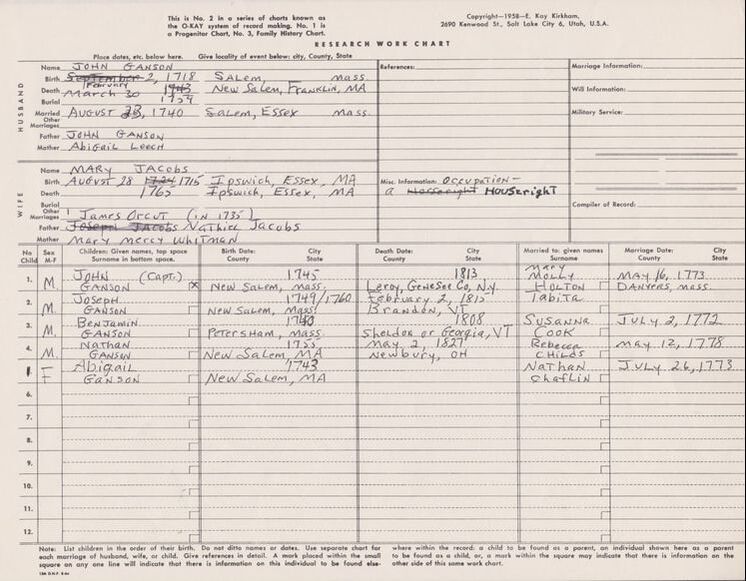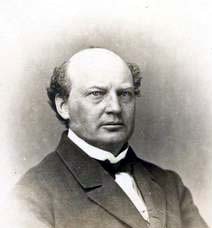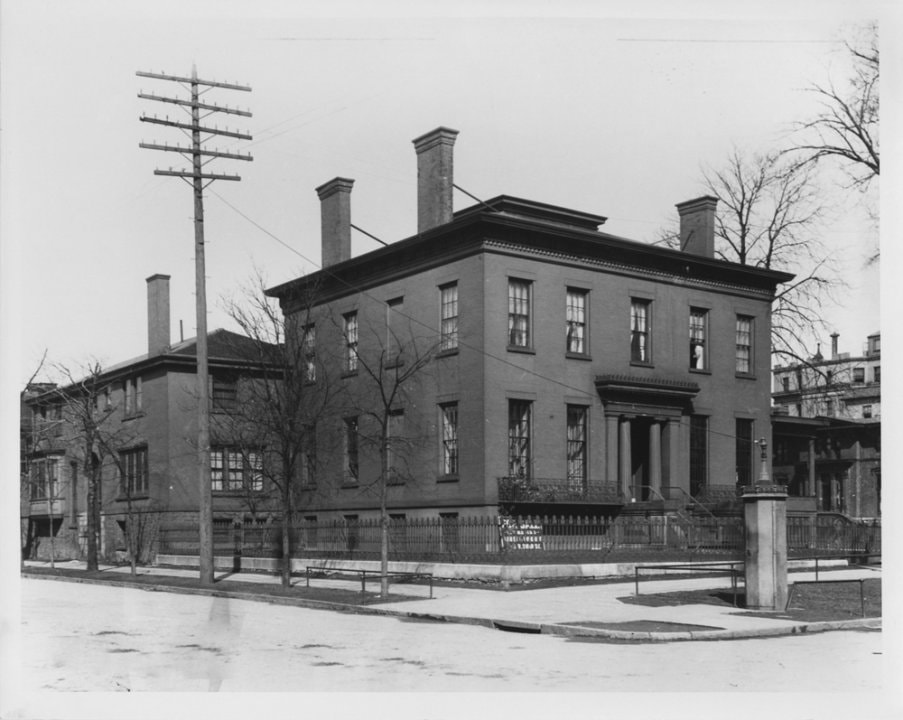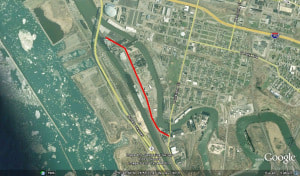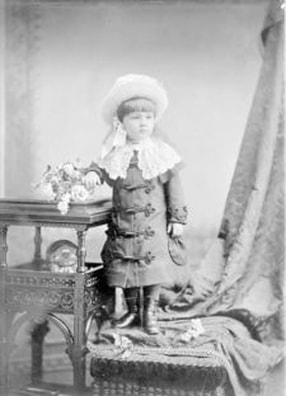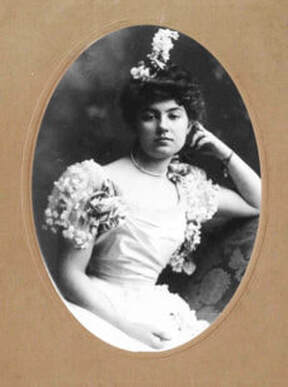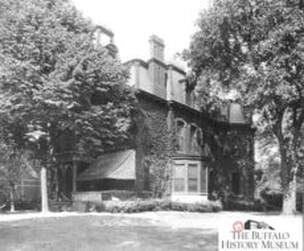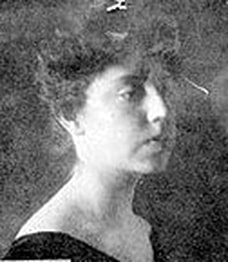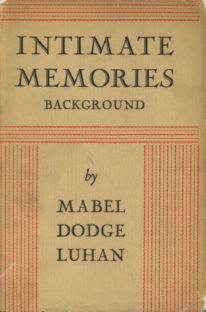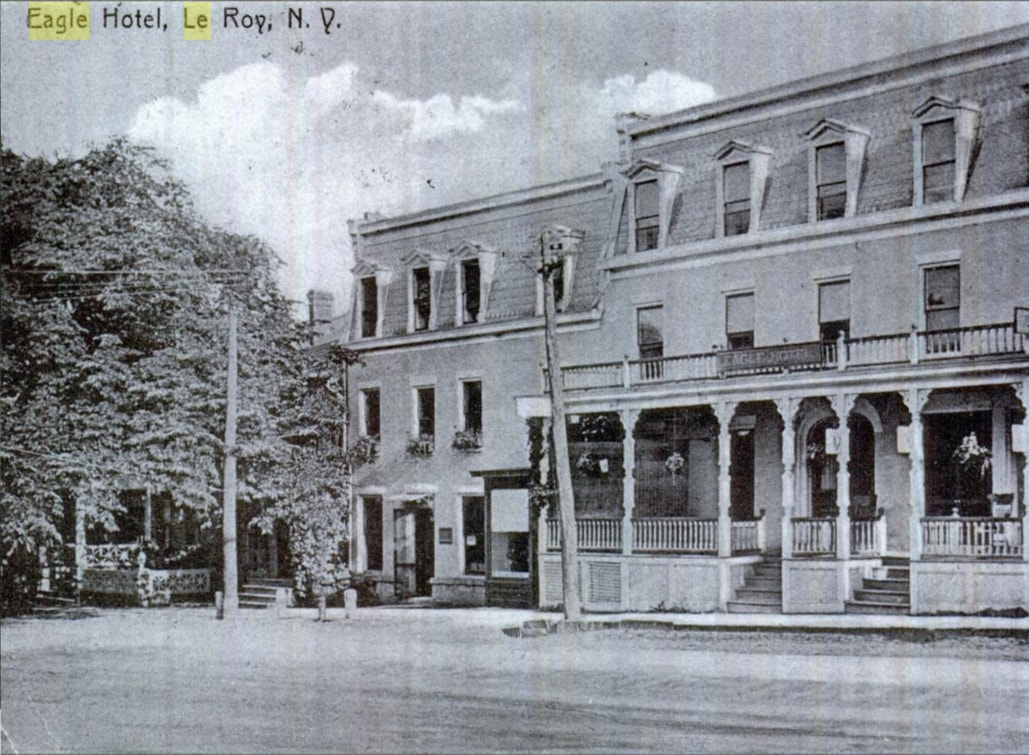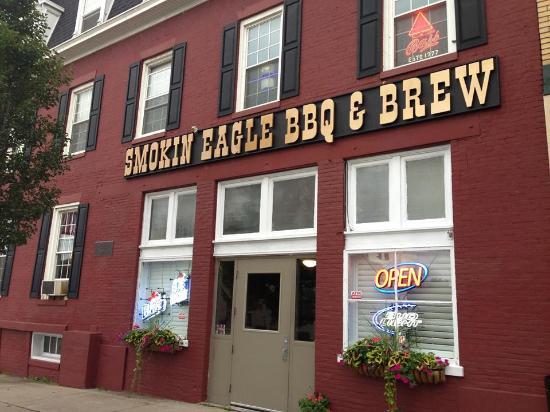|
Ganson Family History
|
Pages from Mary's Bible
|
|
Lewis Papers
|
Additional Documents
|
More Ganson Histories
James Ganson II
Mabel Ganson
|
|
Mabel’s parents Charles and Sara Cook Ganson inherited the family fortune. In the 1880s and 1890s Buffalo boasted sixty millionaires (billionaires in today’s economy). The majority lived in grand mansions on Delaware Avenue, the city’s most prestigious address. Residents included lumber and railroad founder Frank H. Goodyear and leather-trade magnate Bronson Rumsey, whose children would become Mabel’s childhood friends.
The Gansons lived at 675 Delaware Avenue. Mabel called it “a home destined for sorrow.” A particular example showed the state of her parents’ marriage. When her mother returned from a trip, her father lowered the flag to half mast. Product of a loveless marriage, Mabel couldn’t recall her mother ever kissing her or showing affection. Her father only gave her “dark looks and angry sound.” In Victorian times the wealthy elite typically left childrearing to governesses and nursemaids. Mabel’s domain was the third floor. She was the only family occupant. Lacking parental interest, she took comfort in touching mother goose figures that papered the walls of her nursery. Mabel found refuge in books. They piled up as soon as the grown-ups around her discovered that her passion for reading kept her occupied. She pored over “The Arabian Nights and all the fairy tales Hans Anderson and Grimm’s.” She repeatedly savored Alice in Wonderland, a book that provided “a departure from reality.” Books featuring the famous illustrator Howard Pyle not only added to her reading pleasure, they fostered her appreciation for fine art illustration and book design. Pyle’s colorful renditions in Robin Hood may have also awakened Mabel’s adventurous spirit. One of Mabel’s earliest playmates was Nina Wilcox. She liked playing with Nina because she “could make Nina do just as I liked.” Mabel’s mischievous schemes often included Nina and other children. While her exhibitions of “power, prowess, and courage” impressed them, they often dismayed the adults. One instance involved prying house numbers off neighborhood homes. For weeks local newspapers carried the story of mysterious vandals making off with the numbers. When Frank “Grouch” Goodyear delivered a “box of candy” to Mabel late one night, her father discovered two of the “vandals.” He ushered Frank and Mabel to the police station the next day. Mabel roamed the Delaware Avenue area with neighborhood children. They frequented the nearby Rumsey garden park, and ice skated on the pond. When her Cook grandfather gave her a pony and a tiny two-wheeled cart, she took Nina Wilcox and other girls around with her. Galloping as fast as Cupid could run, they drove out to the Forest Lawn Cemetery. Renowned landscape architect Frederick Law Olmstead designed the park. Mabel and her friends played there. There Mabel encountered her first Indian: the 12-foot-tall statue of the famous Seneca Chief, Red Jacket. In the 1890s two individuals offered Mabel new possibilities. Buffalo painter Rose Clark taught art classes at St. Margaret’s Episcopal Girls’ School. Mabel took drawing lessons from her. Fascinated by someone so different, Mabel visited Clark in her studio on Saturdays. She viewed some of the artist’s paintings of children. Later Clark achieved some notoriety for her work. Alfred Stieglitz ranked her among ten foremost pictorial photographers in his 1902 Century Magazine article. Mabel also credited her. “I learned how to see with Rose Clark … without knowing it or meaning it, [she] taught me also her way of life.” At age sixteen, Mabel met the second of her early mentors. In June 1896, she visited Violet Shillito, the sister of a school friend, in Paris. Violet, “a precocious embodiment of Pre-Raphaelite looks and sensibility, was learned in Latin, Greek, French and Italian.” Bookshelves set into the salon’s paneled walls held green and red leather-covered volumes. These ranged from Greek classics to contemporary works by George Sand and Gustave Flaubert. Mabel devoured these. She and Violet read Balzac together. In the small salon, with its brocade-covered chairs and Louis XV tables, Violet played Beethoven for Mabel on the grand piano. Sometimes after dinner, she played Chopin by candlelight. The music of Richard Wagner heightened Mabel’s musical experience that summer. She and the Shillitos traveled to Bayreuth to hear the Ring Cycle. The Opera House resounded with “herculean sounds falling all about us in cascades.” Mid-summer Mabel joined the Shillitos at the Chateau de Pierrefonds outside of Paris. There she and Violet vowed their mutual love. By moonlight in a “natural harmony emanating in rapid singing waves,” they shared “an overflow of increased life.” Mabel had never known anyone with such wisdom and love as she found in Violet. “I would love her best of all the world.” Tragically, Violet died of diphtheria at age twenty-four. She had cultivated la grande vie interiéure (an inner life of spiritual beauty) and the pursuit of art “for life’s sake.” Her life teachings lived on in Mabel. Sensibilities garnered from these female exemplars led to Mabel’s first artistic achievement. Her debut into society would be different. Rose Clark helped Mabel transform the Twentieth Century Club’s characterless ballroom into a Baronial Hall. Banners and coats of arms hung next to great family portraits in the style of Rembrandt and Velásquez. Huge seats and tables, stained black, provided seating. Mabel wore the latest French chic, a white satin dress with billowing folds of white net. After she and her mother received the thousand guests at ten o’clock, the ball got under way. “Fin de siècle clothes of the nineteenth century blended, with the help of punch and champagne (that flowed like water, my dear!), into the background of the Middle Ages. Mabel refused to dance. She either sat or strolled around the room. She smiled until her face stiffened. Finally, at 5 a.m. her father abruptly halted the festivities. The Gansons returned home. |
James Ganson I
|
James Ganson built a residence on the corner of Frontier Road (now South Street) and East Main Street, LeRoy, NY, just a short jog from his family tavern at Ganson's settlement, in 1819. Soon afterwards, he likewise converted his home into a frontier tavern.
It was later sold to Sydney Hosmer and became known as Hosmer Inn. A mansard roof was added sometime in the late 19th century. Today, the building remains as an apartment building. A small log tavern operated by "Auntie" Wemple was purchased by James Ganson. In 1825, James erected this impossing brick building with the help of LeRoy's first brickmaker, Uni Hulbert. The addition to the east was added in 1827 with a passage between the two buildings to allow stagecoaches to enter the livery in the back. The passageway was removed in 1848. The large front porch was removed in 1937. The First village of LeRoy meeting was held at the Eagle Hotel on May 5, 1834. Today it remains open as the Smokin' Eagle BBQ & Brew. |
